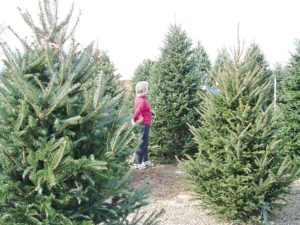Well here we are the last month of 2016, it seems but a blink since we were planning our summer displays last spring and now we are thinking about 2017. Between all the rushing about and preparing for Christmas, I like to take time out to think about what went well and of course not so well in the garden. For me its been quite a year, my partner and I sold our houses and bought a property in North Yorkshire with the intention to build our dream garden. I guess many people move house but how many of you move your plants too? Careful planning is the key indeed we spent the best part of a year working out the ideal location for the property and how we would move all our plants. Starting next month I plan to include a paragraph on our journey more specifically how we prepared, lifted and looked after our plants.
But on to the tasks for this month, as the temperature drops and the leaves fall most of our perennial garden plants start to enter a period of rest. This is a time of year when we can be fairly confident that tasks like pruning can be undertaken and there is no better time to tackle apple and pear trees that are grown in the open garden. Those that are trained on walls, fences or other framework are termed trained fruit and their pruning is done mainly in summer.
If you have a free standing fruit tree it is important to keep it in good shape both health wise and shape. The shape is not intended to make it look pretty but to ensure that the framework of branches produces a good crop of fruit. Most established trees should have about four or five main branches coming from the trunk, these will have several laterals and smaller branches where the flowers and fruit develop. The aim is to create a framework roughly in the shape of a goblet. This allows good air movement and makes it easier to tend and pick the fruit.
Pruning can be carried out from late November through to the beginning of March, but I like to complete it early as I always seem to run out of time in early spring. The first job is to remove branches that cross over and are rubbing against each other stand back and see which one is going in the right direction to create the goblet shape and take the other one out back to where it emerged from. Next cut back last years growth by about one third to an outward pointing bud, this will encourage the remaining buds to produce flowering (and fruiting) spurs.
Young lateral branches can be left unpruned until next year. With older trees it may be necessary to remove some of the old fruiting spurs with a pair of sharp secateurs concentrate on the spurs on the underside of the branches as these generally do not receive as much light as those on the top.
Whilst you are pruning it’s a good idea to check that the grease band you put around the trunk is still firmly fixed and throughout the winter carefully remove any branches broken by wind.
Try to keep on top of leaf collection especially on the lawn as they block out the light and can encourage moulds such as fusarium and and red thread. Avoid walking on lawns in frosty weather as the damage may result in brown footprints where the grass has been bruised. Water-logging is common at this time of year and unless the water remains in puddles for more that three days you do not need to consider further treatment. A longer standing problem may need to be tackled with either spiking or in extreme cases a drainage system.
If you leave your herbaceous perennial stems and seed-heads to enjoy or for the birds then you will probably wait until a mild period in spring before you lift and divide overgrown clumps, but if they look unsightly and have been flattened by the wind you can remove all top growth and in mild periods lift and divide. Take divisions from the outer part of the clump and discard the centre to the compost heap as this is normally weaker and will not produce as stronger plant. Prepare the planting site by incorporating well rotted garden compost and a sprinkling of general fertiliser.
All good wishes for the festive season and enjoy mild days in the garden, see you in 2017.
Happy Gardening, Martin







